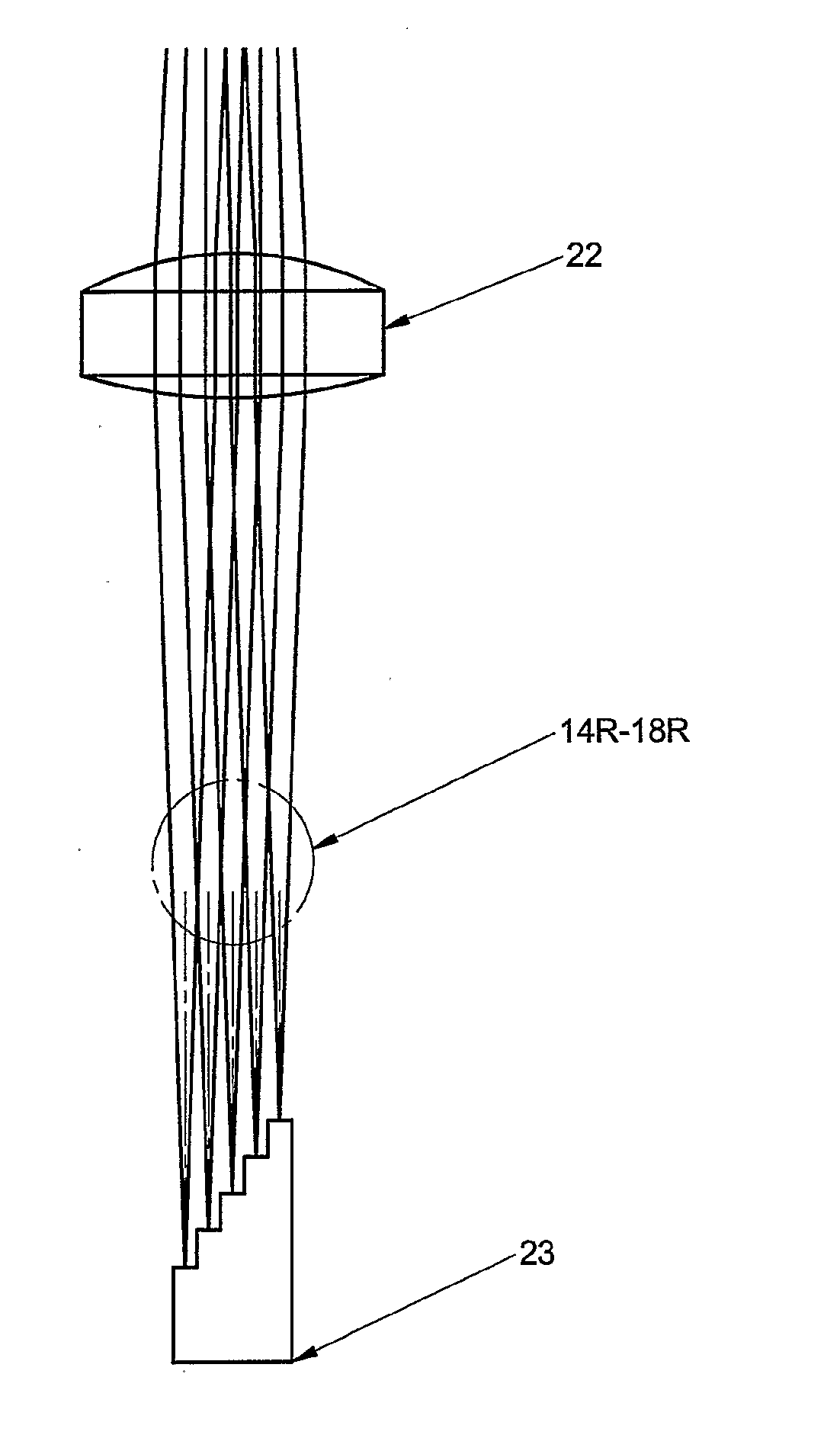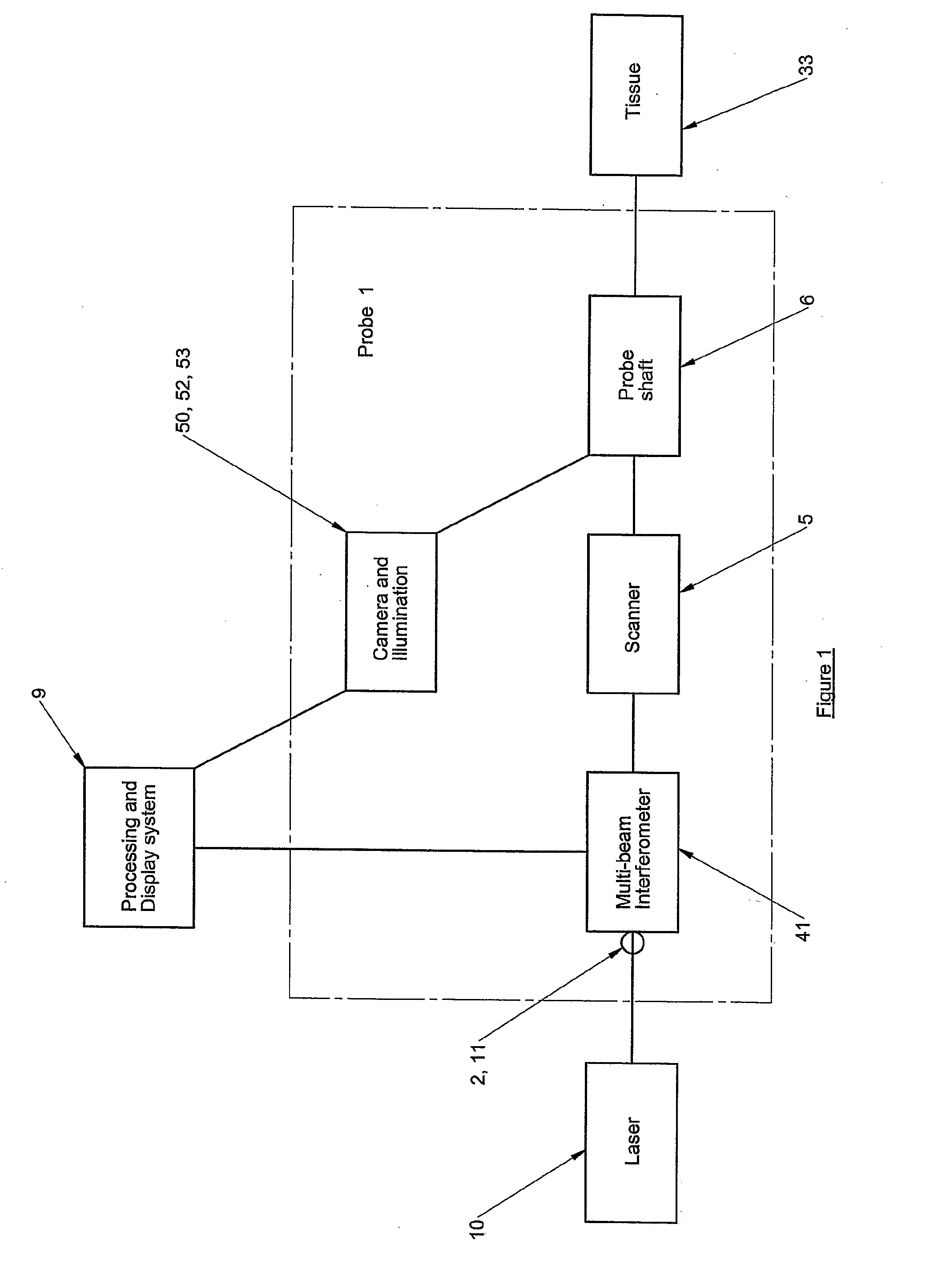Interference Apparatus And Method And Probe
a technology interferometer, which is applied in the field of optical coherence tomography apparatus and methods and probes, can solve the problems of limited acquisition speed, poor signal-to-noise performance, and inability to dynamically adjust focus for best lateral resolution
- Summary
- Abstract
- Description
- Claims
- Application Information
AI Technical Summary
Benefits of technology
Problems solved by technology
Method used
Image
Examples
Embodiment Construction
General Description
[0055]FIG. 1 shows a block diagram of the OCT apparatus indicating a laser 10, provided usually remotely from the probe 1, but in some circumstances within the probe 1. A laser beam 11 from the laser 10 is passed to the probe, usually through a single-mode optical fibre 2. The laser 10 provides a swept spectrum over a wavelength range of at least 50 nm, within a region of the infra-red where tissue absorption is minimised. A wider spectrum improves the depth resolution. The probe 1 comprises a multi-beam interferometer 41, a scanner 5, a probe shaft 6 and camera with illumination system 50, 52, 53, and other components detailed below. The processing and display system 9 and tissue under examination 33 are external to the probe 1.
[0056]FIG. 2 shows more detail of the probe 1. The probe 1 comprises a handle 3 containing an multi beam interferometer 41 and scanner 5, and a probe shaft 6. The probe 1 is constructed so that the shaft 6 can be detached from the handle 3...
PUM
 Login to View More
Login to View More Abstract
Description
Claims
Application Information
 Login to View More
Login to View More - R&D
- Intellectual Property
- Life Sciences
- Materials
- Tech Scout
- Unparalleled Data Quality
- Higher Quality Content
- 60% Fewer Hallucinations
Browse by: Latest US Patents, China's latest patents, Technical Efficacy Thesaurus, Application Domain, Technology Topic, Popular Technical Reports.
© 2025 PatSnap. All rights reserved.Legal|Privacy policy|Modern Slavery Act Transparency Statement|Sitemap|About US| Contact US: help@patsnap.com



